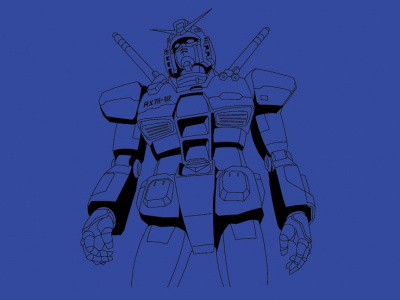We've earlier reported on the upcoming launch of Shonen Jump in the US (see 'Shonen Jump Lineup Tied to Cartoon Network'). We spoke to a group of the executives behind Shonen Jump to get the scoop on the business strategy behind the launch. In this second part of our two-part interview, we talk about anthologies, the market research that showed Viz Shonen Jump would sell here and why, and whether Yu Gi Oh will be bigger than Pokemon.
This interview, presented in two parts (for Part I, see 'Interview with Viz Management, Part I') was conducted at the San Diego Comic-Con International on August 2, 2002. Present for Viz were:
Seiji Horibuchi, CEO, President, and co-founder, Viz Communications, Inc.
Jason Thompson, Editor Shonen Jump, Viz Communications, Inc.
Rick Bauer, Vice President Sales and Marketing, Viz Communications Inc.
Torishima Kazuhiko, Senior Editorial Director, Shueisha Inc.
Satoru Fujii, CFO, Executive Vice President, and co-founder, Viz Communications, Inc.
As you know in the States the past pattern has been that comics are first published in a comic that's devoted to a single property and then collected in trade paperback. In recent years we've seen a growing trend among manga publishers to adopt the Japanese model of going from an anthology to graphic novel, and we're curious about your reflections on that change. Why do you think that America is ready for the anthology to graphic novel path as opposed to the periodical comic to graphic novel path?
Horibuchi: Well the nature of Japanese comics is that they're originally published in weekly form and that's the way they're read; and every week the writer and artist come up with great stories to get the readers to buy next week, every week, and like that. The stories are constructed that way, and several anthologies like Shonen Jump in Japan have 20 stories every week. And people that like three or four titles out of twenty will buy it, and that's how it's structured in Japan. We wanted to go with that for a long time, but the American market didn't allow us to do that because traditionally, as you know, any anthology comic didn't sell. So we've had to wait until now, and I think now is the time to go.
Why now?
Horibuchi: To do that we needed some mass market support -- big support, because without the mass market support we can't do a monthly, bi-weekly, or weekly magazine. Viz was successful in the niche market. We know that market and what they want, but to really release a monthly anthology, a bi-weekly anthology we need the mass market support. And now it's ready because of the popularity of Dragon Ball, Yu Gi Oh, and Yu Yu Hakusho. All of these are the most popular animations on TV, and as you know because of the popularity of the animation, the market really reacts, not only for comics but for the merchandising, the videos, the games, and so on. So it's mass market support for the phenomenon surrounding the comics.
Many American children do not even know that a comic exists for Dragon Ball. There are three or four million children that watch Dragon Ball -- more than half of the children do not even know that there's a comic or that everything originated form Shonen Jump in Japan. They don't know. So I think it's a perfect timing to let them know. The market supports it, and there's enough interest in the industry.
Thompson: I'd like to add that in terms of comparison to the American market and to the previous comic anthologies that have been done, the individual installments in Shonen Jump will be 40-60 pages per issue. So there will be one or two standard American comic size issues of each title.
What's the target circulation?
Bauer: We're expecting 100,000-200,000 out of the gate. It's going to depend on some of these tie-ins and cross-promotional programs that we've talked about to drive that, but we have very lofty goals of targeting a circulation of 1 million in three years, which would be phenomenal. There aren't many teen magazines with a circulation of 1 million.
We've talked about the US manga publishers going closer to the Japanese model of anthology to trade paperback. Another way in which American publishers seem to be going closer to the Japanese model is by adopting the titles of the Japanese publications, for example there's Newtype and Shonen Jump around the same time. Do you attach any significance to that? Why do you think that's happening?
Horibuchi: I think it's great--it's nice to see the many publications that originated in Japan. I love that trend. I think that really shows that the market is growing. We know that--for the last sixteen years it's been growing steadily. But everybody is getting into the market and I worry about too much product coming in at one time. For Viz, we have very strong content. Whatever comes into the market, eventually the good stuff will sell.
In that sense we have the strongest, most popular manga. We have all of the content in Shonen Jump and all of the other Viz product, and especially supported by our strong relationship with our parent company Shogakukan. And now because of the launch of Shonen Jump here, Viz and Shueisha have made a partnership agreement that provides Shueisha an ownership interest in Viz. We have changed our company structure, and that means we have a much stronger relationship with Shueisha also. Shueisha and Shogakukan combined have over 60% of the sales in the Japanese market. So we have the strongest titles' content we could provide.
I wanted to focus on the name, specifically using the Japanese name, That seems to be, for a magazine title, something that's different than what's been done in the past. Is that part of the growing acceptance of Japanese pop culture in America?
Horibuchi: The name?
Shonen Jump, as opposed to calling it something like Viz Comics Anthology.
Horibuchi: I'm seeing a trend that Japanese and Chinese characters are cool. On t-shirts you're seeing many Chinese characters. And it's cool to use shonen. 'Shonen, what is it?' For children, it might be very cool, 'You don't know what shonen means? This is a cool thing.' We're doing that intentionally.
Bauer: There's some market research behind this as well. There are two translations for shonen from the Japanese--one is boy, and one is pure of heart. And a year and a half ago when we did the initial market research for this book, we commissioned Insight Research in New York to do some work for us. We took a poll of kids eight to sixteen and said, 'Would American kids be interested in purchasing a magazine that contained manga from popular anime titles on TV?' And what came back was that 12% of kids eight to sixteen said, 'I would buy that magazine.'
What was unique about that was that these kids were different from other kids in terms of psychographic and demographic characteristics. The market research bore that out. They're online more, they watch more anime on TV, they read comics, they're a little bit more affluent, they tend to be white and around cities. The market research term coined this phrase, 'the anime lifestyle.' They said there's a wonderful opportunity for a magazine like this to be the unifying authority, to speak to these boys, to define and reflect and reinforce this lifestyle. We were very excited about that, and we were working with Shueisha at the time to put it all together.
We did a little bit more market research that said, 'Great, these kids are excited about it, but why? What is it that draws kids into these stories?' What we found out is that it was the redeeming themes. Every one of the stories in Shonen Jump has redeeming themes of loyalty and courage and self-improvement and against-all-odds and a little bit of romance mixed in. And it was these kinds of themes that draw the audience into the story. So back to the magazine, that's the shonen lifestyle--the pure of heart, the shonen lifestyle--and our mission became very clear. This magazine was going to reflect the shonen lifestyle and speak to these boys and help them determine what it means to be cool and to live that lifestyle.
Thompson: I'd like to add that many Japanese words, especially anime and manga, and otaku, have become known in the US. We launched Animerica magazine back in 1992 and that itself had a Japanese word in the title. And we also see shonen as a cool sounding word.
Horibuchi: There's a band called Shonen Knife, quite a popular girl band, and they are active here in the States, and they are known among some Japanese pop fans. So the shonen word, somehow, comes here.
Thompson: I'd say it's definitely the best-known Japanese manga magazine among American fans following manga.
This is the last question. Viz was at the center of the Pokemon phenomenon. My question is whether Yu Gi Oh can be as big as Pokemon.
Horibuchi: Wow. Of course the original comics are very strong. The content is so powerful. So for Shonen Jump, Yu Gi Oh is central, powerful content. Everything is great, including Dragon Ball and others, but Yu Gi Oh is attracting many readers in the comics. As far as Pokemon goes, there were no original comics. They were based on the game world. But for Yu Gi Oh, everything starts with the comic. In the other worlds, in video and merchandising, the card game is looking OK and I think video will sell some numbers, but I don't think it will be as big as Pokemon.
Why?
Why. Well first of all, Pokemon has such a strong video game. The game world keeps readers coming back. But in the Yu Gi Oh case, there isn't a strong game. There's a card game, but Pokemon was the first one, and Yu Gi Oh is second. So it's ok but I think Pokemon appealed to everyone's imagination. Yu Gi Oh will do very well, but I don't think it will equal Pokemon.







